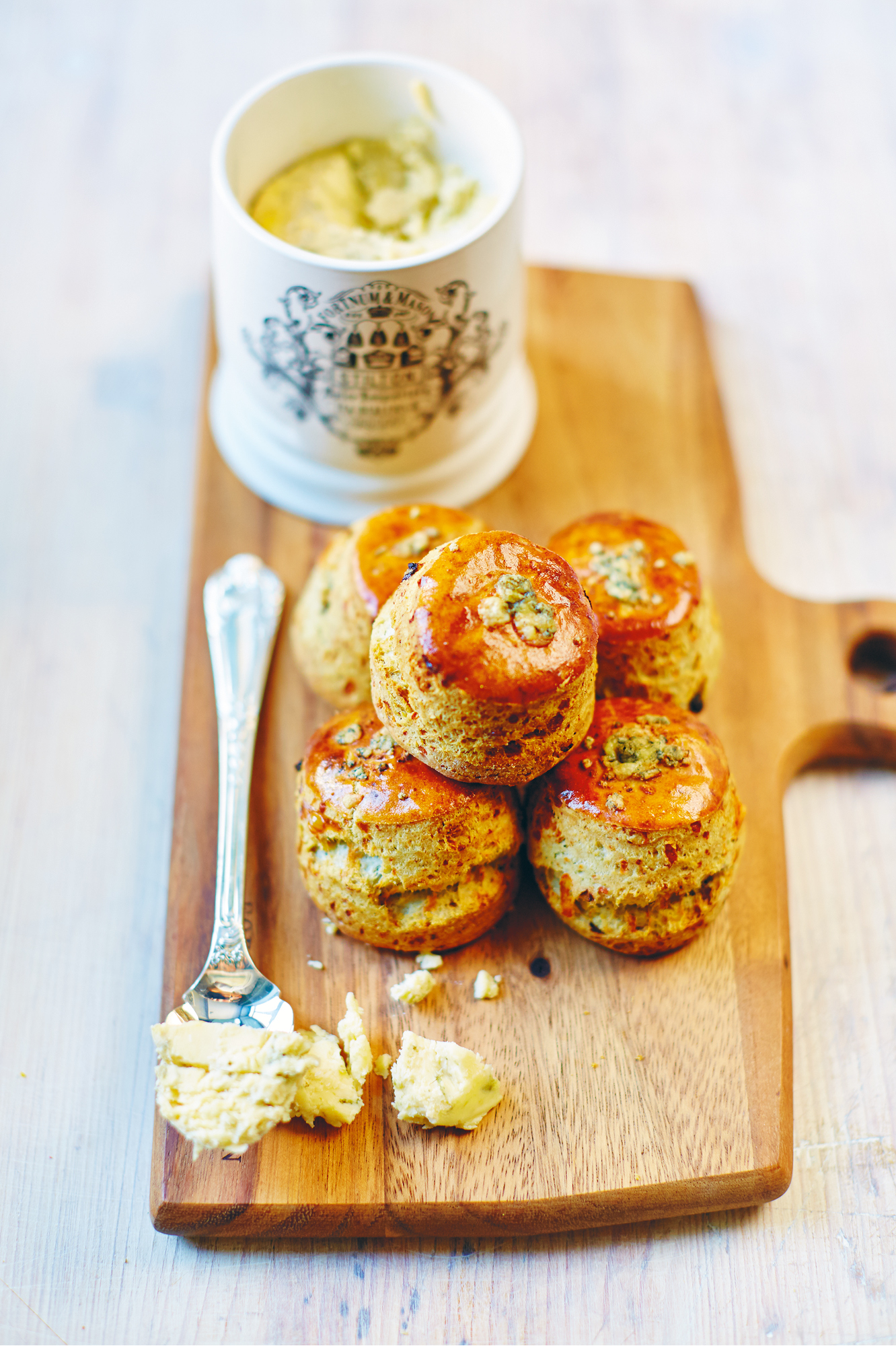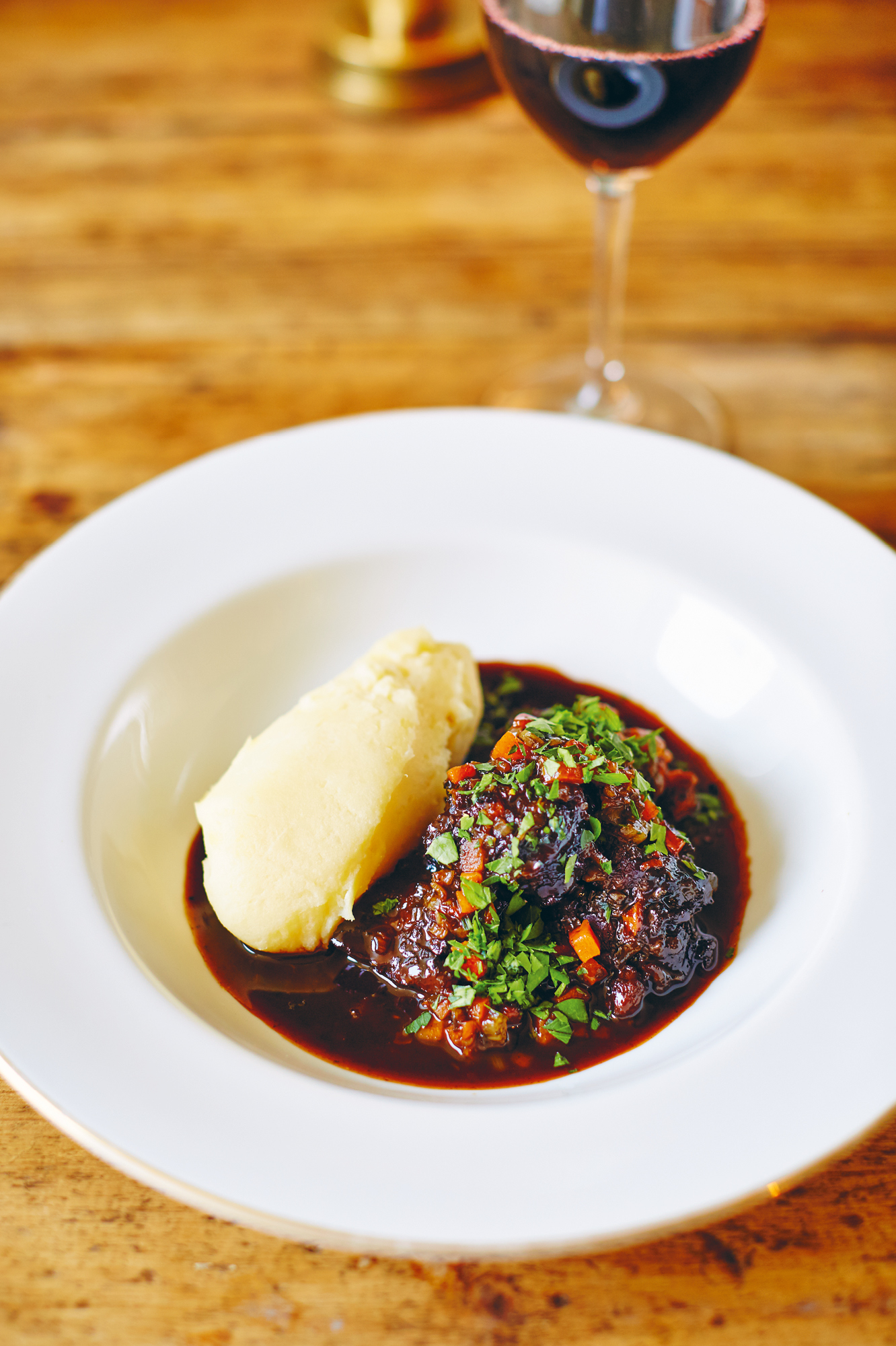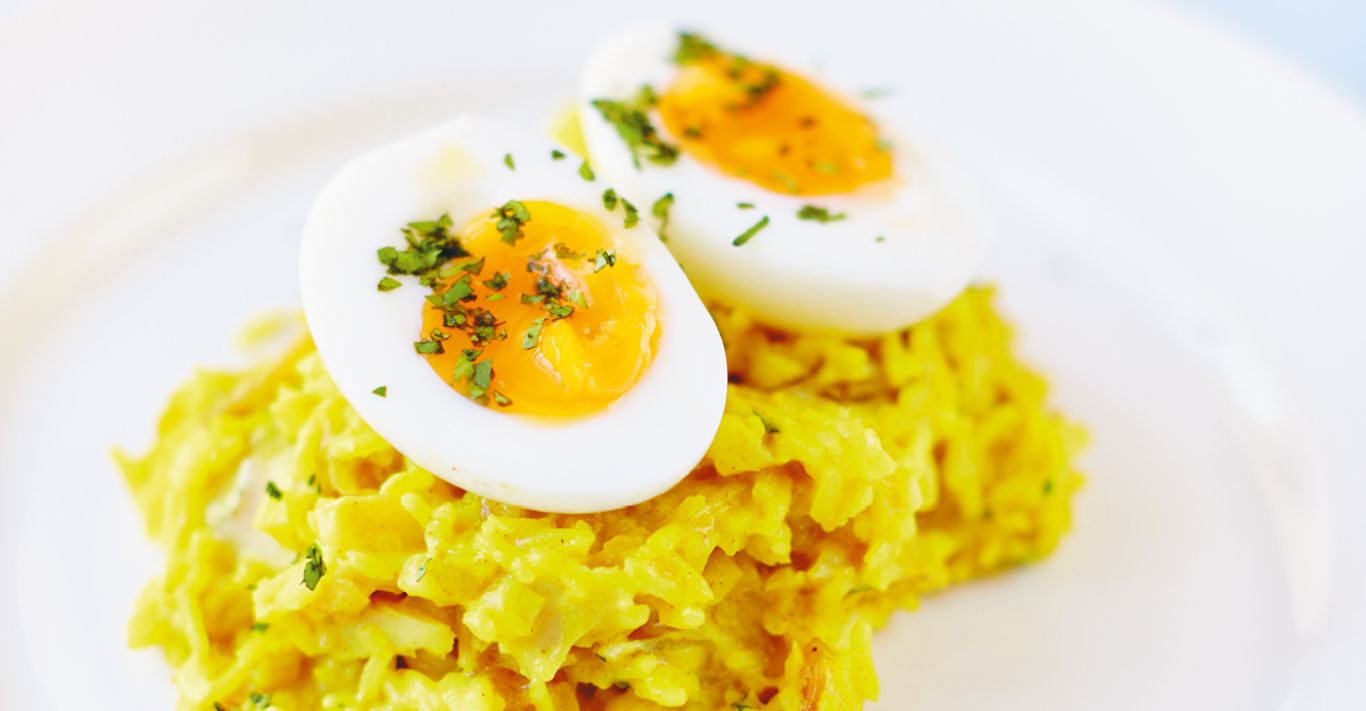The Fortnum’s Cookbook is full of incredibly comforting recipes, perfect for making the most of time spent hibernating at home.
The cookbook, written by Tom Parker Bowles, has a truly welcoming British bent to it and offers an elevated take on classic dishes. Each recipe is easy to follow and uses the best of British ingredients – all of which are available to order from Fortnum’s Food Hall both nationally and internationally.
Below we look at four of the most popular recipes from the book, ideal to create on a spring weekend sheltering in place.
The Fortnum’s Cook Book is available to order from the Fortnum & Mason website.
Kedgeree with smoked haddock
A culinary love child of Empire, this Anglo-Indian dish has its roots in khichri, a deeply sub-continental mix of lentils, rice, herbs and spices. Bewhiskered brigadiers and very proper peers came back to Blighty with a taste for the dish, gradually adding fish, preferably smoked, in place of lentils, and a few boiled eggs for that true taste of Nanny’s nursery. And so kedgeree was born.
Fortnum & Mason was always a spice pioneer, and was among the first British companies, around 1849, to mix its own curry powders. One of the Fortnum family was part of the East India Company. And Fortnum’s even had a range of bottled curry sauces.
There’s a whiff of cardamom and coriander in this recipe, plus coconut milk for the most gentle tropical allure. The eggs should be soft-boiled, and the curry spicing delicate rather than fierce.
Serves 4
2 tablespoons vegetable oil
2 shallots, finely diced
4 garlic cloves, crushed
4 cardamom pods
I teaspoon coriander seeds
I tablespoon medium curry powder
250g basmati rice
50g golden raisins
200ml coconut milk
250ml chicken stock
400g undyed smoked haddock
6 eggs
200ml crème fraîche
4 tablespoons chopped coriander
Salt and freshly ground black pepper
METHOD
Heat the vegetable oil in a heavy-based casserole, add the shallots and garlic, then cover and cook gently. Remove the cardamom seeds from the pods and lightly crush them in a pestle and mortar with the coriander seeds. Add them to the pan along with the curry powder and continue to cook for another 5-10 minutes, until the shallots are tender.
Rinse the rice in a sieve under the cold tap, then drain well and add to the pan, stirring to coat it with the spices. Add the raisins. Mix the coconut milk and stock together, add to the rice and bring to the boil. Cover the casserole tightly with a lid or aluminium foil and transfer to an oven heated to 180°C/Gas Mark 4. Cook for 20 minutes, until the liquid has been absorbed and the rice is tender. Remove from the oven and fluff the rice up gently with a fork. Season with salt and pepper.
While the rice is cooking, poach the smoked haddock. Put it into a large frying pan, cover with water and bring to a gentle simmer. It should be cooked through at this point; if not, turn it over and give it a minute longer. Remove from the pan, drain thoroughly and leave until cool enough to handle. Flake the flesh into large chunks, discarding the skin and any bones.

Stilton and blueberry scones
Fortnum’s has been selling Stilton since at least 1849, and has been using the same creamery for the past 40 years. ‘Stiltons from Leicestershire farms’ cries a Commentary of the 1920s, ‘of the sort most favoured by the nobility and the gentry who delve into them with fierce abandon.’ The blueberry jam is quite subtle and simply adds a slight sweetness.
Makes about 10
360g ’00’ flour
20g baking powder
½ teaspoon salt
105g unsalted butter, diced
85g Stilton, crumbled
20g Parmesan cheese, freshly grated
25g blueberry jam
120ml whole milk
1 egg, lightly beaten, to glaze
METHOD
Sift the flour, baking powder and salt into a bowl, then add the butter and rub it in with your fingertips until the mixture resembles fine crumbs. Stir in 60g of the Stilton, plus the grated Parmesan and the blueberry jam. Add the milk and mix until everything comes together into a soft dough; do not over-mix or the scones will be heavy. Cover the bowl with cling film and leave to rest for 30 minutes.
On a lightly floured work surface, roll out the dough to about 1.5cm thick. Cut out rounds with a 5.5cm cutter, re-rolling the trimmings where necessary. Place the scones on a baking sheet lined with baking parchment. Brush with the beaten egg, scatter over the rest of the Stilton and leave to rest for another 30 minutes.
Place in an oven heated to 180°C/Gas Mark 4 and bake for 12-15 minutes, until well risen and golden brown. Transfer the scones to a wire rack to cool.

Braised ox cheek with horseradish mash
Ox cheek – all that chewing of cud makes it a tough cut. But slow-cooked it softens splendidly. Marinate the meat in red wine with mixed vegetables the day before. And you can use hot horseradish cream in your mash, although fresh packs more punch. Just buy a root, grate, and add with a generous (but not too generous) hand. You will probably need to order the ox cheek in advance and make sure the butcher trims it well.
Serves 4
1kg ox cheek, trimmed and chopped into pieces
400g carrots, chopped
2 leeks, sliced
4 celery stalks, sliced
600ml red wine
4 tablespoons vegetable oil
1l beef/veal stock
A small bunch of thyme
2 bay leaves
1-2 teaspoons redcurrant jelly
40g unsalted butter, diced
2 tablespoons chopped flat-leaf parsley
Salt and freshly ground black pepper
For the horseradish mash
4 large, floury potatoes, such as Maris Piper, cut into chunks
50g unsalted butter
50ml double cream
50ml milk
I heaped tablespoon creamed horseradish
METHOD
Put the ox cheek in a dish with the carrots, leeks and celery. Add the wine, cover and leave to marinate in the fridge overnight.
The next day, strain the meat and vegetables, reserving the wine. Heat half the vegetable oil in a large, heavy-based frying pan and seal the ox cheek in batches, transferring it to a casserole as it is done. Pour the wine and stock into the pan and bring to the boil, stirring and scraping the base of the pan with a wooden spoon to deglaze it, then add it to the meat in the casserole.
Heat the remaining oil in the frying pan and sauté the vegetables from the marinade. Add them to the casserole, together with the thyme and bay leaves. Bring to a simmer, season well, then cover and transfer to an oven heated to 140°C/Gas Mark 1. Braise for 3 hours, until the meat is tender. The top of the ox cheek should be very soft to the touch and may seem overcooked, but when it cools the structure will reset itself
Strain off the sauce into a clean pan and simmer until it has reduced by about half; it should have a thin coating consistency. Stir in redcurrant jelly to taste, then whisk in the butter a few pieces at a time to give a glossy sauce. Keep warm.
For the horseradish mash, cook the potatoes in boiling salted water until tender, then drain well. Gently heat the butter, cream and milk in the pan, then return the potatoes to it and mash thoroughly. Mix in the creamed horseradish and season to taste.
Divide the mash between individual plates, add the ox cheek and pour the sauce over and around. Sprinkle with the chopped parsley




